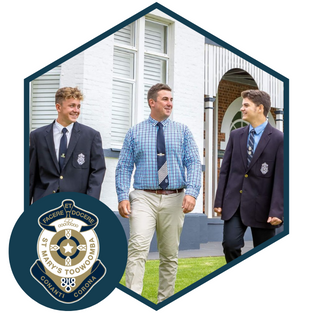The Challenge
Since 1899, St Mary’s College in Toowoomba has motivated students to reach their full potential and seek lifelong learning. The school, which offers a wide range of subjects in years 5 to 12, looks to technology to achieve modern teaching and learning.
The school’s 1-to-1 ICT (Information and Communications Technology), which ensures that all students have access to a device and digital resources inside and outside the classroom, is evidence of this. That way, administrators say, the students have greater independence to learn and pursue innovation in their education.
Over several years, St Mary’s tried a variety of learning management systems (LMS) to satisfy sta , student and parent priorities. These included CLC life, Edmodo, Moodle, Schoology, and UniServity. However, Brendon Willocks, the Director of School Improvement said, "We found these challenging to get staff buy-in because of the complicated user interfaces or complex workflow to complete simple tasks."
Administrators wanted to find a different learning software that would provide the most technologically beneficial environment that aligns with their goals for the institution.
Key Findings
Favourite parts of Instructure Canvas: Quizzes, Gradebook, Rubrics, Data, and SIS integration
100% adoption by teaching staff within two years of starting Canvas
St Mary’s teachers integrated Canvas into their professional development (PD) courses
The Decision
St Mary’s staff began to evaluate several systems and digital tools.
“I had come from a school that had used a learning management system extensively in our teaching,” said Leah Dempster, St Mary’s Director of eLearning. “We wanted somewhere the students could access their course content and engage with teachers online.”
St Mary’s selected the Canvas learning management platform by Instructure and rolled out Canvas school-wide in 2015. Canvas was different than other options because it was cloud-native, open-source, and fully supported. The adoption of Canvas, in terms of the number of courses and the number of people using it, has increased every year since. That includes students, teachers, administrators, and St Mary’s learning support team.
Implementing Canvas among the teaching staff required a deliberate approach. St Mary’s put together training and professional development (PD) courses for teachers of all knowledge levels of information technology. After the first year, administrators asked teachers to put together their landing pages and course information in Canvas.
Dempster said, “We want to remind teachers that they can do things differently, and that they don’t have to be the ‘expert’ in the classroom anymore. It’s exciting to see teachers who were once apprehensive about using technology in the classroom to come back to us and say ,‘I’m using this now!’”
With Canvas, administrators saw new ways to carry out differentiated instruction and collaboration, plus the ability for learners to work outside the classroom.
“A lot of the onus is on the student to do their own learning at home, because there are probably not enough hours at school for all of the content,” said Kris Glass, a PE teacher and member of the eLearning team at St Mary’s. “Canvas makes it easy for those students to use and access those documents.”
There never seems to be enough time in the classroom to deliver all of the content. Our vision for Canvas is that we can create resources to help deliver this content and continue to make students curious, and inquisitive about their learning.
Leah Dempster
Director of eLearning
St Mary's College
The Results
Now after a couple of years since adopting Canvas, St Mary’s administrators are using the platform deeper and in different ways to gain more insight into the students, curriculum, outcomes and assessments. That has led to greater use of Canvas Data, a service from Canvas that provides administrators with optimised access to their data for reporting and queries.
“As a teacher, I really like Canvas data to see where my students are at and how they are engaging with the content. I use Canvas data leading up to exam time to see how much they are actually using Canvas at home. This usually reflects how much independent study they are doing, and the types of resources they are engaging with,” said Dempster.
“The immediate benefit is that because we have teachers and students changing classes throughout the year, we’ve always got their data stored in Canvas, we don’t have to look somewhere else. It has minimised the disruptions and it has allowed us to be able to download all the grades from Canvas and actually work out where kids are sitting (academically).”
St Mary’s transfers grades directly into its student management system. Canvas Rubrics allow for students to receive instant feedback on their work.
Curriculum leaders are also integrating Canvas in new ways across different courses. They discussed new content delivery, whether that is in person, online, blended or through video—anywhere and anytime. St Mary’s shares these best practices with other schools in Australia, and now wants to take it further.
Dempster explained: “Our goal is to make teaching and learning more relevant, modern, and engaging for our students. If you do that, they’ll want to continually improve and expand their knowledge. Success will follow.”
Download Case Study
